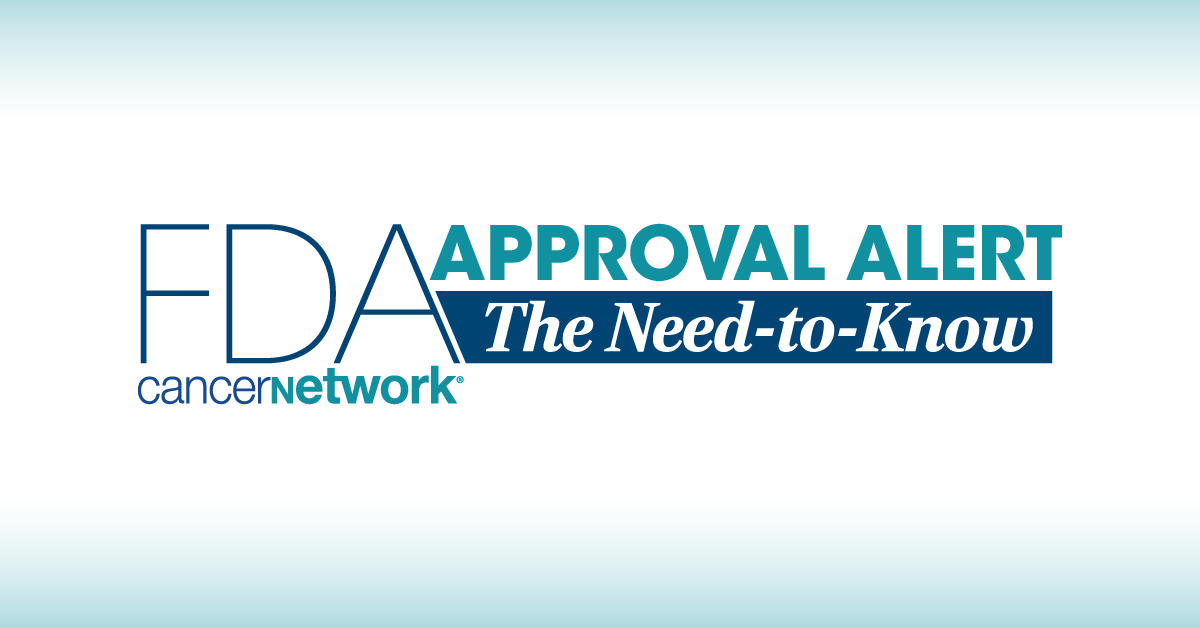FDA OKs Subcutaneous Daratumumab in High-Risk Smoldering Multiple Myeloma
Data from the phase 3 AQUILA study support the FDA approval of subcutaneous daratumumab in this population with smoldering multiple myeloma.
“[This approval] will be a quite dramatic change in our philosophy and practice in multiple myeloma," according to Joseph Mikhael, MD, MEd, FRCPC, FACP, FASCO.

The News
The FDA has approved daratumumab and hyaluronidase-fihj (Darzalex Faspro) as a treatment for patients with high-risk smoldering multiple myeloma, according to a press release from the agency.1
Supporting Data
The agency based its decision on findings from the phase 3 AQUILA study (NCT03301220), in which investigators assessed subcutaneous daratumumab monotherapy vs active monitoring for patients with high-risk smoldering multiple myeloma. Top-line data showed that median progression-free survival (PFS) was not evaluable in the daratumumab arm vs 41.5 months in the active monitoring arm (HR, 0.49; 95% CI, 0.36-0.67; P < .0001).
Study authors previously presented findings from the AQUILA trial at the 2024 American Society of Hematology (ASH) Annual Meeting and Exposition in San Diego, California.2,3 After a median follow-up of 65.2 months (range, 0-76.6), the median progression-free survival (PFS) was not reached (NR) with daratumumab monotherapy compared with 22.1 months using active monitoring (HR, 0.36; 95% CI, 0.23-0.58). Additionally, 63.1% and 40.8% of patients in each respective arm maintained progression-free status at 60 months (HR, 0.49; 95% CI, 0.36-0.67; P < .001).
The 5-year overall survival (OS) rates were 93.0% with daratumumab and 86.9% with active monitoring (HR, 0.52; 95% CI, 0.27-0.98). Data showed an objective response rate (ORR) of 63.4% vs 2.0% in each arm (P < .001). Additionally, the median time to frontline treatment for multiple myeloma was NR and 50.2 months, respectively (HR, 0.46; 95% CI, 0.33-0.62; P < .0001).
Expert Perspective
“[This approval] will be a quite dramatic change in our philosophy and practice in multiple myeloma…. What it heralds to us is validating the notion of having a category of smoldering multiple myeloma, of potentially using daratumumab monotherapy for 3 years as a legitimate treatment for those individuals,” Joseph Mikhael, MD, MEd, FRCPC, FACP, FASCO, stated in an interview with CancerNetwork® ahead of the approval. “Perhaps [the approval] further underscores the critical importance of a shared decision-making process between the health care team and the patient because there would be several options at that point in a patient's high-risk smoldering multiple myeloma to decide whether or not they should have treatment and what treatment if they should. This would definitely be a significant game changer, as it were, in the high-risk smoldering world.”
Mikhael is the chief medical officer at the International Myeloma Foundation and a professor in the Applied Cancer Research and Drug Discovery Division at the Translational Genomics Research Institute, an affiliate of City of Hope Cancer Center, in Phoenix, Arizona.
AQUILA Trial Design
In the multicenter phase 3 AQUILA trial, patients were randomly assigned 1:1 to receive subcutaneous daratumumab (n = 194) or active monitoring (n = 196) for 3 years or until confirmation of progressive disease. In the experimental arm, patients received daratumumab via subcutaneous injection at 1800 mg plus hyaluronidase-fihj at 2000 U/mL once weekly for cycles 1 and 2, every 2 weeks for cycles 3 to 6, and every 4 weeks thereafter; each cycle is 28 days.4
The trial’s primary end point was PFS, defined as the time from random assignment to active multiple myeloma per International Myeloma Working Group criteria. Secondary end points included time to biochemical or diagnostic progression, ORR, complete response rate, time to frontline treatment for multiple myeloma, PFS on first-line treatment for multiple myeloma, OS, duration of response, and time to response.
Patients 18 years or older with high-risk smoldering multiple myeloma, measurable disease, and an ECOG performance status of 0 or 1 were eligible for enrollment in the trial. Those with multiple myeloma requiring treatment or primary systemic amyloid light-chain amyloidosis were ineligible for study entry.
Safety Data
Findings from ASH 2024 showed that 40.4% and 30.1% of patients in the daratumumab and active monitoring arms, respectively, experienced grade 3/4 treatment-emergent adverse effects. In each arm, the most common toxicity of this kind was hypertension (5.7% vs 4.6%).
The FDA previously received the regulatory application for daratumumab as a treatment for this patient population in November 2024.5
References
- FDA approves daratumumab and hyaluronidase-fihj for high-risk smoldering multiple myeloma. FDA. November 6, 2025. Accessed November 6, 2025. https://tinyurl.com/49ks5zkx
- Dimopoulos MA, Voorhees PM, Schjesvold F, et al. Phase 3 randomized study of daratumumab monotherapy versus active monitoring in patients with high-risk smoldering multiple myeloma: primary results of the Aquila study. Blood. 2024;144(suppl 1):773. doi:10.1182/blood-2024-201057
- DARZALEX FASPRO (daratumumab and hyaluronidase-fihj) shows 51 percent reduction in risk of progression to active multiple myeloma for patients with high-risk smoldering multiple myeloma. News release. Johnson & Johnson. December 8, 2024. Accessed April 22, 2025. https://tinyurl.com/mr2djw5x
- A study of subcutaneous daratumumab versus active monitoring in participants with high-risk smoldering multiple myeloma. ClinicalTrials.gov. Updated April 3, 2025. Accessed April 22, 2025. https://tinyurl.com/3jtvv4ex
- Johnson & Johnson submits applications in the U.S. and EU seeking approval of DARZALEX FASPRO / DARZALEX as subcutaneous monotherapy for high-risk smoldering multiple myeloma. News release. Johnson & Johnson. November 8, 2024. Accessed April 22, 2025. https://tinyurl.com/4wkve363
Navigating AE Management for Cellular Therapy Across Hematologic Cancers
A panel of clinical pharmacists discussed strategies for mitigating toxicities across different multiple myeloma, lymphoma, and leukemia populations.